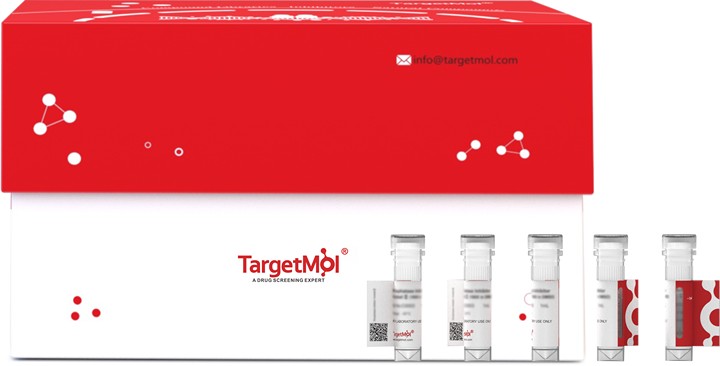 Your shopping cart is currently empty
Your shopping cart is currently empty
CYCS Protein, Human, Recombinant (His)
Cytochrome C (CYCS) is a small heme protein that belongs to the cytochrome c family. It is found loosely associated with the inner membrane of the mitochondrion. Cytochrome C is a highly soluble protein that functions as a central component of the electron transport chain in mitochondria. CYCS transfers electrons between Complexes III (Coenzyme Q - Cyt C reductase) and IV (Cyt C oxidase). CYCS plays a role in apoptosis. Suppression of the anti-apoptotic members or activation of the pro-apoptotic members of the Bcl-2 family leads to altered mitochondrial membrane permeability resulting in release of cytochrome c into the cytosol. Binding of Cytochrome C to Apaf-1 triggers the activation of caspase-9, which then accelerates apoptosis by activating other caspases.

CYCS Protein, Human, Recombinant (His)
| Pack Size | Price | USA Warehouse | Global Warehouse | Quantity |
|---|---|---|---|---|
| 5 μg | $112 | 7-10 days | 7-10 days | |
| 10 μg | $183 | 7-10 days | 7-10 days | |
| 20 μg | $292 | 7-10 days | 7-10 days | |
| 50 μg | $545 | 7-10 days | 7-10 days | |
| 100 μg | $813 | 7-10 days | 7-10 days | |
| 200 μg | $1,190 | 7-10 days | 7-10 days | |
| 500 μg | $2,070 | 7-10 days | 7-10 days | |
| 1 mg | $2,970 | 7-10 days | 7-10 days |
Product Information
| Biological Activity | Activity has not been tested. It is theoretically active, but we cannot guarantee it. If you require protein activity, we recommend choosing the eukaryotic expression version first. |
| Description | Cytochrome C (CYCS) is a small heme protein that belongs to the cytochrome c family. It is found loosely associated with the inner membrane of the mitochondrion. Cytochrome C is a highly soluble protein that functions as a central component of the electron transport chain in mitochondria. CYCS transfers electrons between Complexes III (Coenzyme Q - Cyt C reductase) and IV (Cyt C oxidase). CYCS plays a role in apoptosis. Suppression of the anti-apoptotic members or activation of the pro-apoptotic members of the Bcl-2 family leads to altered mitochondrial membrane permeability resulting in release of cytochrome c into the cytosol. Binding of Cytochrome C to Apaf-1 triggers the activation of caspase-9, which then accelerates apoptosis by activating other caspases. |
| Species | Human |
| Expression System | E. coli |
| Tag | C-6xHis |
| Accession Number | P99999 |
| Synonyms | Cytochrome C,CYCS,CYC |
| Amino Acid | Gly2-Glu105 |
| Construction | Gly2-Glu105 |
| Protein Purity | Greater than 95% as determined by reducing SDS-PAGE. (QC verified) |
| Molecular Weight | 16 KDa (reducing condition) |
| Endotoxin | < 0.1 ng/µg (1 EU/µg) as determined by LAL test. |
| Formulation | Supplied as a 0.2 μm filtered solution of 20 mM PB, 10% Trehalose, 200 mM NaCl, 50% Glycerol, 0.05% Tween 80, pH7.0. |
| Stability & Storage | Lyophilized powders can be stably stored for over 12 months, while liquid products can be stored for 6-12 months at -80°C. For reconstituted protein solutions, the solution can be stored at -20°C to -80°C for at least 3 months. Please avoid multiple freeze-thaw cycles and store products in aliquots. |
| Shipping | Shipping with blue ice. |
| Research Background | Cytochrome C (CYCS) is a small heme protein that belongs to the cytochrome c family. It is found loosely associated with the inner membrane of the mitochondrion. Cytochrome C is a highly soluble protein that functions as a central component of the electron transport chain in mitochondria. CYCS transfers electrons between Complexes III (Coenzyme Q - Cyt C reductase) and IV (Cyt C oxidase). CYCS plays a role in apoptosis. Suppression of the anti-apoptotic members or activation of the pro-apoptotic members of the Bcl-2 family leads to altered mitochondrial membrane permeability resulting in release of cytochrome c into the cytosol. Binding of Cytochrome C to Apaf-1 triggers the activation of caspase-9, which then accelerates apoptosis by activating other caspases. |
Dose Conversion
Calculator
Tech Support
| Size | Quantity | Unit Price | Amount | Operation |
|---|

Copyright © 2015-2025 TargetMol Chemicals Inc. All Rights Reserved.



